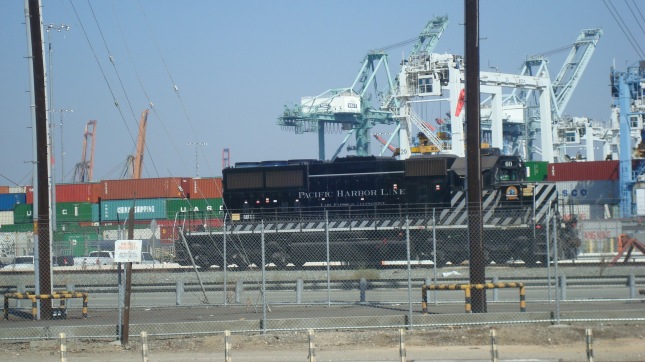Geographically, Los Angeles is a little odd. A map of the city’s boundaries looks kind of like a jigsaw puzzle that somebody forgot to finish. We generally think of it as reaching from Downtown to the beach, the Valley to South LA. But actually there are a handful of smaller cities within that area, including San Fernando, Burbank, West Hollywood and Beverly Hills, that punch some sizable holes in the map. And one of the strangest aspects of the city’s outline is that the boundary stretches a long, thin arm to the south in order to embrace San Pedro and Wilmington, including the Port of Los Angeles.
I imagine that many Angelenos, like me, completely forget that the San Pedro and Wilmington are part of the City of LA. They were annexed by (or consolidated with, depending on which source you consult) Los Angeles in 1909. Around the turn of the century it was becoming increasingly apparent to LA’s business community that the port was an economic powerhouse which would bring tremendous wealth to the region. The City’s leaders courted San Pedro and Wilmington for years, but the two smaller communities were concerned about losing their autonomy. Finally the deal was sealed in 1909, with LA promising to spend $10 million to improve the Port of LA.
Today the Port of LA is one of the busiest harbors in the world, handling billions of dollars in goods and creating thousands of jobs. It is a major part of the regional economy, which is why we should all be concerned about the current strife between labor and management. The issues are extremely complex, and I don’t pretend to understand them all. To boil it down to the basics, shippers are struggling to cut costs because of increasing competition and workers are afraid of reduced compensation and the loss of jobs. This article from the Daily News offers more background.
Port Congestion Worsens, Labor Talks Escalate
A crisis like this at the Port would be a problem any time of year, but it turns into an even bigger problem when it comes just before the holiday season. This is the period when retailers do most of their business, and there is massive anxiety about inventory not reaching the shelves in time. Tensions are running so high that Mayor Garcetti has stepped in to help, and business interests have sent a letter to President Obama asking him to intervene.
Resolving these problems won’t be easy. It’s not just a matter agreeing on a new contract. There are larger issues stemming from the way global markets are evolving, and even if this situation is resolved, there will be many challenges to come. These developments don’t just affect the local economy. The impacts will be felt throughout the state and the nation as well.
For those of us who tend to forget about San Pedro, Wilmington and the Port of LA, this should serve as a reminder that they’re vital part of our city.

















